The Citroen GS might just be the most sophisticated production car of the 20th century, eclipsing even the mighty Citroen DS for its cleverness and integrity.
That it died alone, surrounded by incontinent cats and piles of old newspapers is one of the twentieth century’s greatest tragedies.
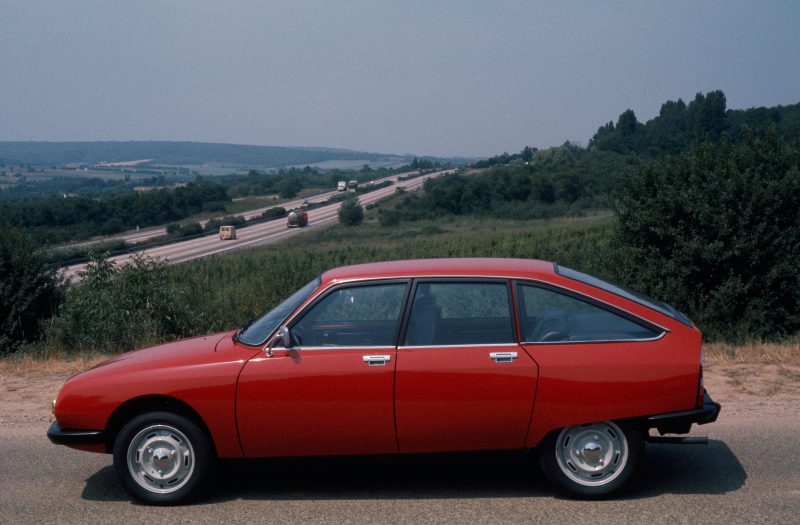
Genesis
Born in 1970 after a 14-year gestation, the Citroen GS possess one of the nicest engines the world is ever likely to see. As a air-cooled flat-four, it initially displaced just 1015cc, developed 55bhp and bore more than a passing resemblance to that of the Citroen 2CV, Dyane, Ami, and Bijou.
Yet it was far, far more than that. The cylinder heads, for example, were so finely machined that they sealed to the engine block without need of a cylinder head gasket. The cost of machining them to such a fine tolerance might have been obscene but Citroen’s way then, if not now, was to do things once and to do them right.
So the flat-four engine was perfectly aligned with the four-speed (later, in the case of the GSA, five) gearbox, which allowed the use of equal length driveshafts to the front wheels. Torque steer would remain something that others drivers had to contend with; even when fitted with larger and more powerful engines, a GS driver would never experience it.
Citroen also designed the GS to have true centre point steering, with the pivot point of the front wheels coinciding exactly with the centre of the contact point of the tyre. Only possible because the French firm splashed out on twin wishbone front suspension, centre point steering endowed the GS with reduced steering effort (thus no need for expensive power steering) and, more importantly, the ability to maintain a steady course irrespective of road surface or even the catastrophic failure of a front tyre.
Period TV adverts demonstrated this in a variety of ways, including blowing out a front tyres in the face of oncoming articulated lorries while travelling at 80mph. The GSA merely lurches briefly before tracking straight and true between them at a three-figure closing speed.
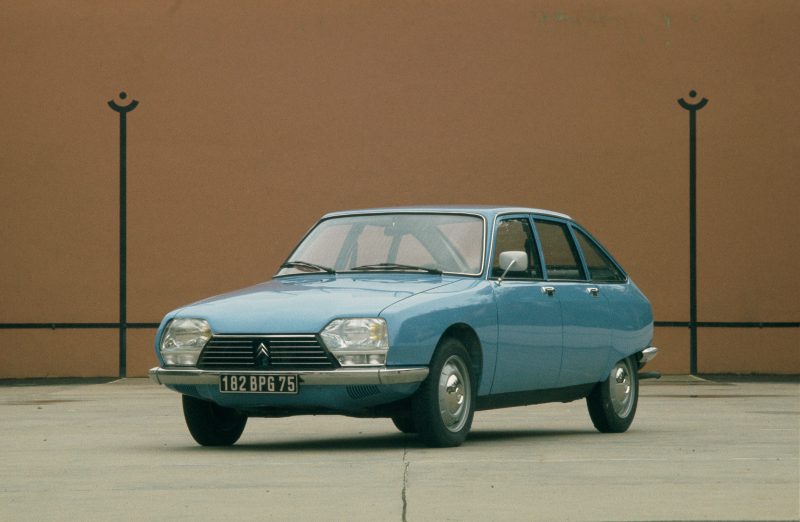
The GS is also capable of being driven sans a rear wheel, courtesy of the complex but hugely clever hydropneumatic suspension that gives a pillowy soft ride, pin-sharp handling and more road holding than any owner could ever exploit. Rumours of 1G lateral force persist but the three-position suspension height adjustment – low, medium, and high – are fact and enable jack-free wheel changing: fumble between the front seats and pull the lever all the way back into ‘high’. Wait for the GS to rise to its full majesty and then put the adjustable stand under the appropriate corner. Drop the suspension down to ‘low’ and the offending wheel will be left wagging in the air with the expenditure of zero effort on your part.
More cleverness abounds: the inboard front disc brakes were clamped twixt gearbox and driveshafts, an innovation that eliminates the need for power-sapping flexible brake hoses, reduces the unsprung weight and, in conjunction with anti-dive suspension geometry, helps to prevent the nose of the car diving under heavy braking.
But that’s not the end of the GS’s braking repertoire: the front disc brakes feature twin-piston calipers and the rears are , load-sensitive discs. All are hydropneumatically powered, giving enormous retardation for very little effort; nothing stops faster than a GS, despite having skinny 145×15 tyres. Michelin X for preference, of course.
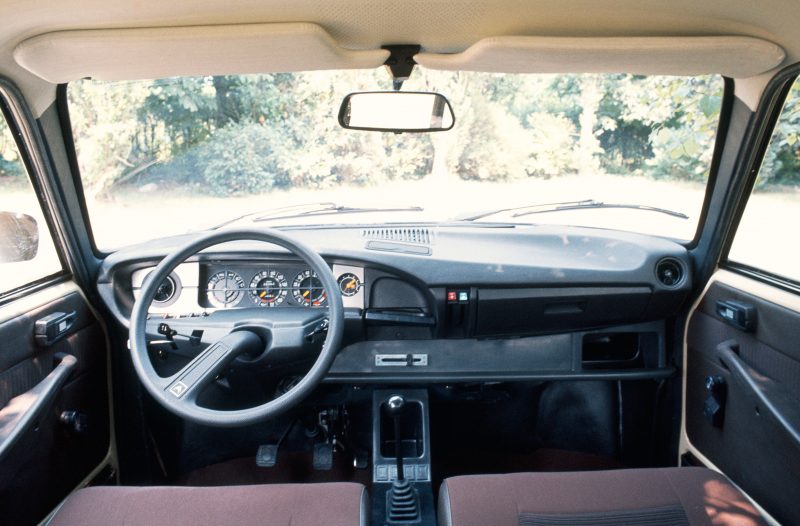
The interior was as quirky as the engineering. French cars featured a psychedelic dashboard of many colours; UK cars had to settle for a more easily legible and beautifully wrought set of five Veglia round dials. All featured a handbrake that sprouted at 90° from the centre of the dashboard, a piece of stylistic whimsy that was probably the GS’s least convincing feature.
Despite its relatively diminutive size, the GS could seat five in comfort, plus all of their luggage in an almost perfectly square boot. (The GS was, despite appearances, a saloon rather than a hatchback.)
An estate followed in 1972, an inevitability thanks to that impressive hydropneumatic suspension; the GS rode level and at a consistent height no matter how great the load.
A 1222cc engine was introduced in 1972 following criticisms that the GS was to slow. This perception probably had more to do with the competence of the chassis rather than any genuine lack of power but the extra 5bhp and torque made a huge difference to the way the car felt.
The C-matic semi-automatic gearbox made an unnecessary appearance in 1971.
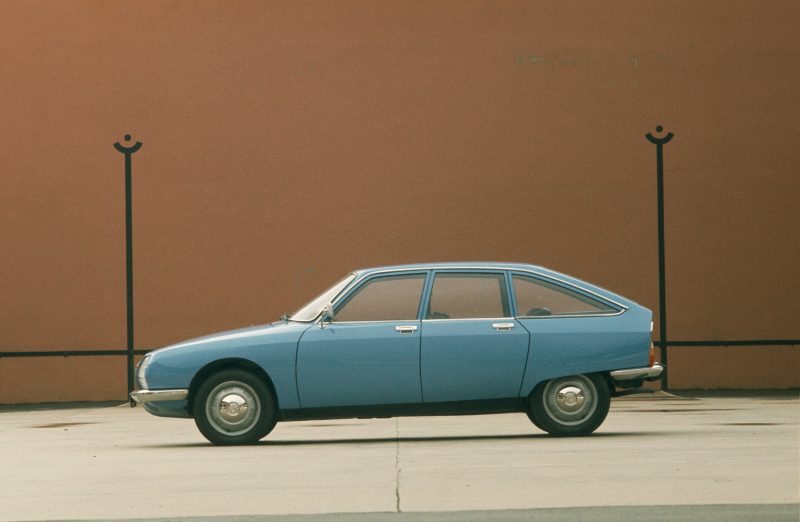
Citroen starts to sell out
The five-door GSA hatchback and estate were launched in 1979 with a 1299cc engine and an extra 5bhp. In addition to trading an immensely practical boot for a more fashionable hatchback, the lovely slim line chrome door handles and bumpers were replaced by ugly great black plastic jobbies and the almost painfully minimal interior was made gaudy by clumpy plastic protrudences that were touted as the last word in ergonomics but were actually nothing of the sort. Alloy wheels were offered as an option, although the ‘sporty’ GSAX1 had them as standard, along with a tiny rear spoiler.
The rot had set in in every sense of the word and the once proud French company was about to start its decline into middle management oblivion, sliding off the bottom of company car lists throughout Europe. Even the more powerful engine and five-speed gearbox weren’t enough to lure drivers into buying a car that had a reputation for rusting that equaled, or even exceeded, that of its Lancia and Alfa Romeo rivals.
The GSA died in 1984, replaced by the worthy but comparatively dull BX. It sold 575,000 examples in total, which just wasn’t enough; the GS sold five times that number and was, at one time, the most popular car in France with 20,000 finding new homes every month.
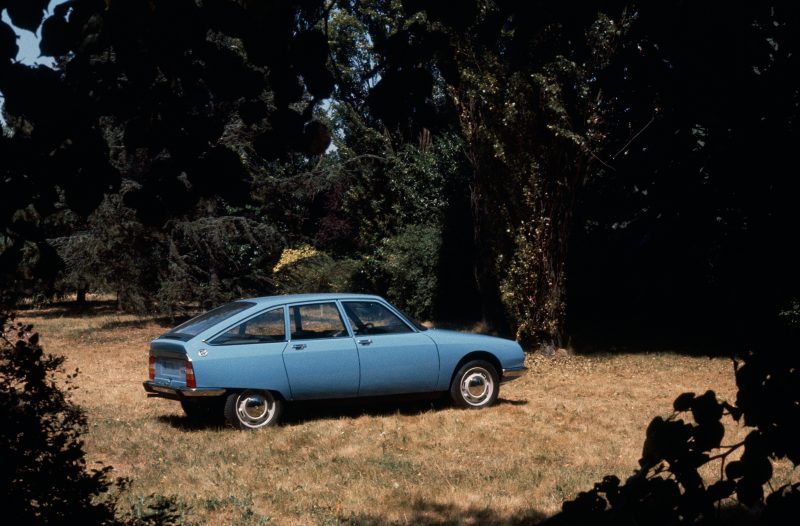
GS trim levels
Three trim levels were offered initially: GSpecial, Club, and Pallas. While there was, in truth, little to choose between them, the more basic Club model acted as the mid point while the more luxurious Pallas – better quality seat material, headrests, exterior rubber trim, bigger chrome wheel trims, and tinted windows – was aimed at the more affluent buyer: the GSpecial was a budget version in every sense of the word to the extent that it was fitted with a model-specific 1129cc engine and 56bhp.
The more sporting GSX, GSX2 and GSX3 and GSAX1 cars featured matt black bumpers, driving lamps and side window trim, and one-piece sports seats. Later cars also gained a small rear spoiler and three-pointed black wheel trims. Aimed at the younger buyer, all were red and were mechanically unaltered from their more mainstream siblings (although some claim that a choice of gearboxes was offered: the standard ‘box or a more sporting option with even shorter ratios); few, if any, survive today.
Other special editions include the hideous black and red Basalte; the multi-hued Voiture Sans Frontières, which featured the flags of every European nation (that’d be one for post-Brexit Britain, wouldn’t it?); and the GSA Tuner, which featured a high-end Phillips cassette/radio, amplifiers and better speakers.
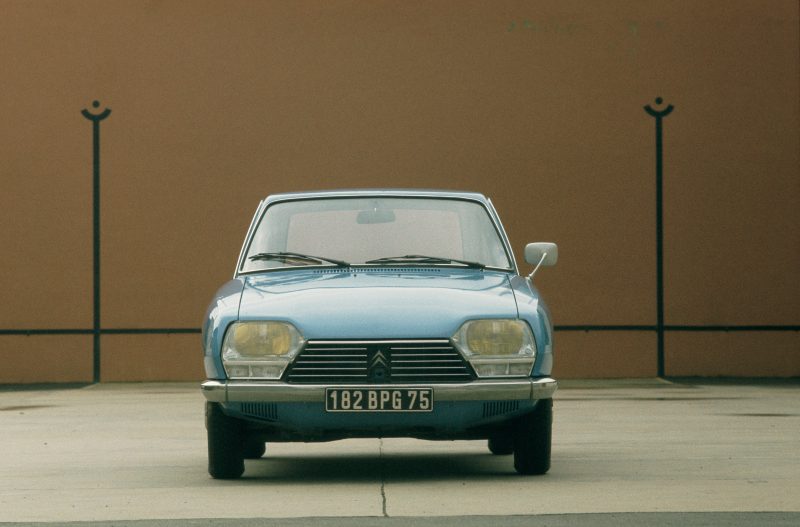
GS oddities
The rotary engined GS Birotor featured a 106bhp Wankel engine. Only available in either gold or beige paintwork, extroverts could combine the two in a fetching twin-tone paint job.
It drove extraordinarily well but cost 70 percent more than the standard GS, elevating it into the realms of the DS, with which it just couldn’t compete. Poor sales, combined with the reliability issues that were inherent with the Wankel engine back-in-the-day, sounded the death knell after just 3 years. (A sub-10mpg city thirst didn’t help, either.)
Citroen tried to buy them all back to avoid having to maintain a supply of spares. A lot of owners succumbed, and one of the saddest things I’ve ever seen was a skip full of Birotor engines waiting to be crushed…
However, out of a total of 847 Birotor cars sold, a surprisingly high number remain, with some claiming that as many as a third dodged the scrapman. Whether you can prize them away from their devoted owners is another question, but if you can, you should.
The GS Break, a three-door and five-door range of vans were also built, but its success as a commercial vehicle never matched that the cars. It is very, very cool, though.
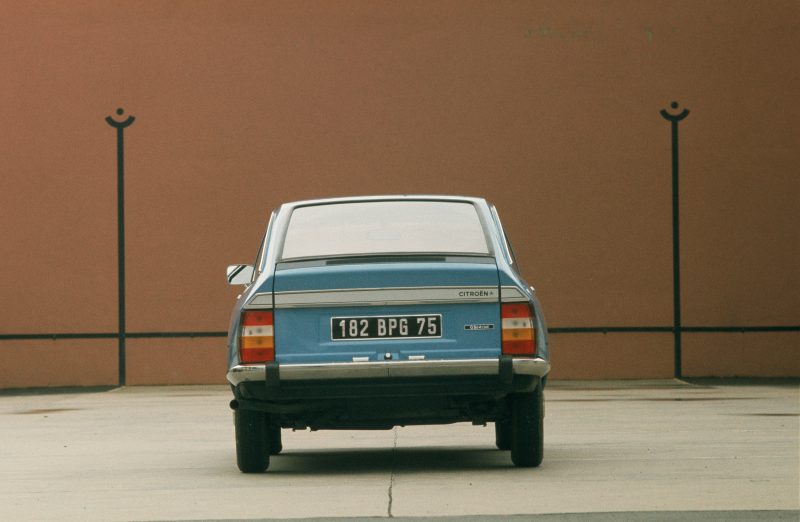
Driving one
Starting a GS is a real piece of theatre. Sure, the engine cranks into life willingly (and if it doesn’t there’s a starting handle to fall back on) but it is the suspension that draws your attention, creaking and groaning as it rises slowly off the bump stops to its final driving height, something that can take a minute or two if the accumulator is shot.
If starting a GS is fun, then driving one is not necessarily an unalloyed joy. They’re almost painfully slow by modern standards and surprisingly noisy; that air-cooled engine might be a smorgasbord of engineering sophistication but the lack of a noise-dampening water jacket and low gearing means it’s quite loud and not especially tuneful.
Yet, the steering is light and accurate and the handling and poise are still competitive. Given its weight – just 900-950kgs, depending on trim – the GS goes well. That sleek shape is as aerodynamic as it looks, and the Kamm tail helped secure the GS’s claim as having the lowest co-efficient of drag of any contemporary car.
The top speed is an indicated 100mph, and while it takes a while to get there the car’s mid-range torque is enough for easy-ish overtaking and relaxed motorway cruising, even now. The brake pedal has no movement whatsoever, relying solely on the pressure applied to it to modulate the braking effort. Simpletons claim it takes some getting used to, something Citroenists insist just isn’t true.
Fuel consumption is unlikely to better 30mpg, with 25mpg more likely, for which you can blame that low-gearing and rev-happy engine.
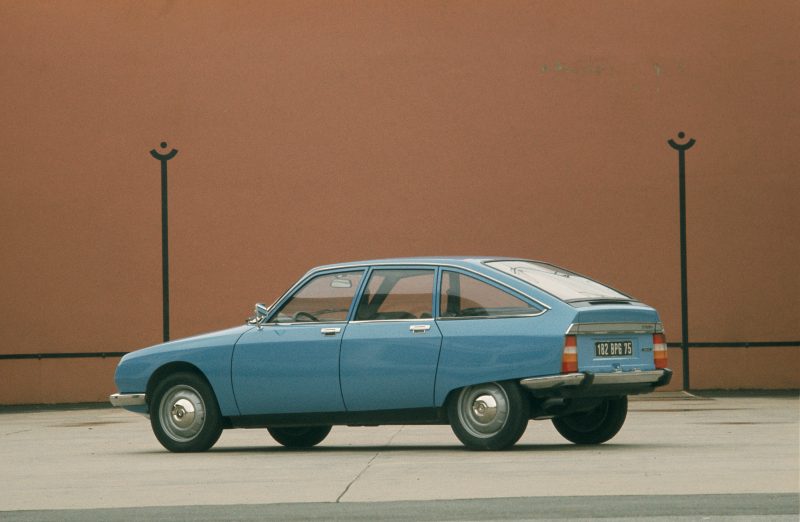
Buying one
The GS/GSA might be the second most popular car Citroen ever built but its propensity to spectacularly self-destruct when faced with a northern European climate means there are probably fewer than 50 left in the whole of the UK – and most of those are probably basket-cases that will, despite their owners almost obsessive enthusiasm, never see tarmac again.
It’s rust that kills ‘em. I used to buy three-year-old MOT failures for £15 and a fiver spent on P38 and underseal was normally enough to create enough structural rigidity to convince my semi-tame half-blind, alcoholic MOT tester to write out a certificate. I turned ‘em round for a healthy profit and before you judge me, this was the early eighties and I was just thirteen years old…
So you need to check for rust, and then check again because it will be there. Then look for trim; the plastics are resilient enough but the seat fabric tends to fade and break up when it’s exposed to sunlight, even the pale, watery sort we get over here.
Finally, you’ll need to assess the health of the oily bits, not because they’re easy to find because they aren’t but they are a doddle compared to missing or damaged trim. The camshafts wear, as do driveshafts. The twin timing belts are straightforward to change as are the points; one nut holds the distributor on and it’s much easier to unbolt it and set the points on the workbench. A hard ride points to worn-out suspension spheres that act as both springs and dampers. Replacing them is easy and cheap, further ruining the GS’s reputation as being a difficult and expensive car to run.
Ruining the GS’s reputation as being a difficult and expensive car to run? Yep, despite the GS’s mechanical sophistication, the seventeen-year-old me managed to keep a series of them on the road with little effort and minimal expenditure but then I could rely on sourcing spares from the local scrapyard, which was stuffed full of rotten but mechanically sound cars.
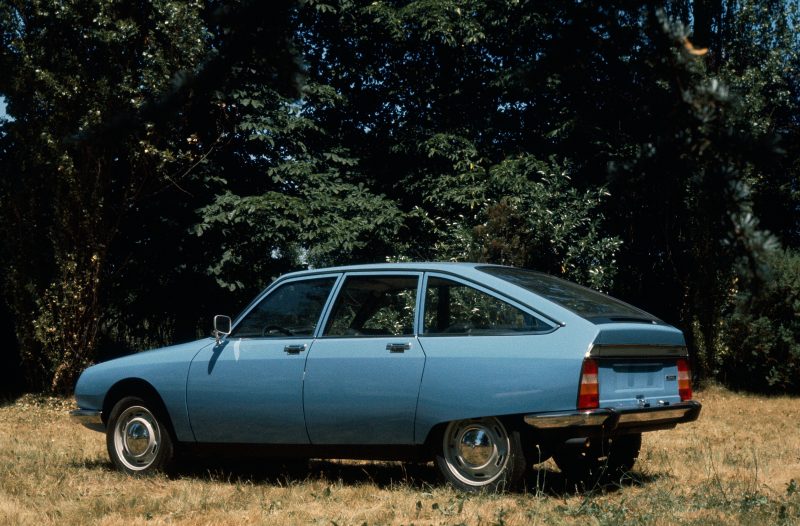
What to pay
Pricing something this rare is a tricky subject. On the one hand just finding one would tax the patience of a saint, while the fact that hardly anyone bothers to do so keeps prices surprisingly low.
I reckon £10,000 would buy you a minter, with £5,000 getting you something that is usefully presentable. Restoration projects are attractively priced at under a grand, but you’d be a fool to buy anything that doesn’t have an MOT. (There speaks the voice of experience, BTW.) France is still a rich seam of left-hand-drive cars and those from the south are often in spectacularly good condition, sun-faded interiors aside. They’re cheap too, and one day I’ll buy one sight-unseen and drive it home as part of an epic road-trip.
Just don’t expect it to appreciate anytime soon, will you?
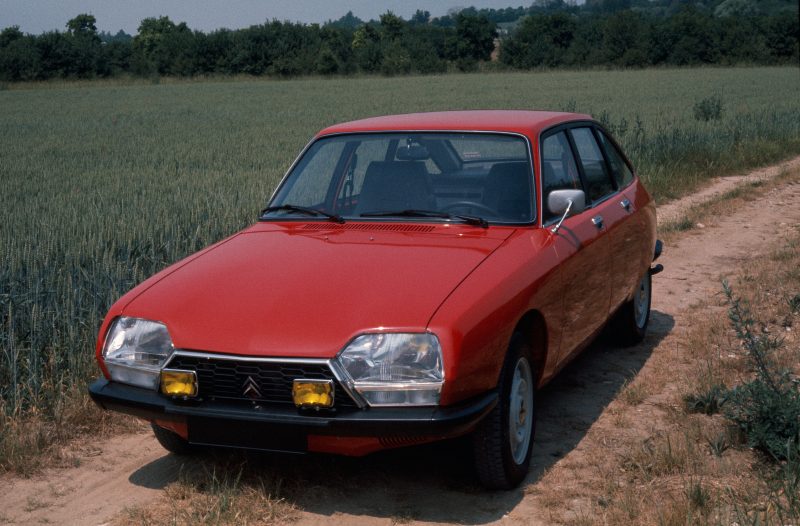
Tuning
Tuning a GS is an esoteric subject if ever there was one, but it can be done. I knew someone that bolted twin-carbs onto one for some little gain but the biggest gains can be made by screwing on BX suspension spheres for improved damping and fitting 165×15 tyres for improved roadholding and higher gearing. I’m sure you could turbocharge one – and the chassis could certainly cope with the extra power and torque – and if you ever do get round to doing it then I’d love to see the finished car.
The GSA five-speed gearbox can also be slotted in with a little bit of fiddling and is worth doing if you don’t mind compromising the car’s originality.
Carlton Boyce